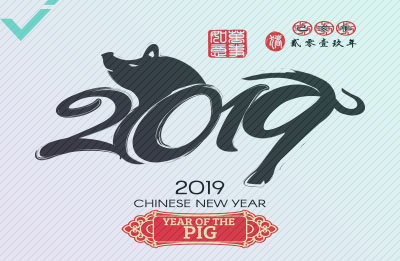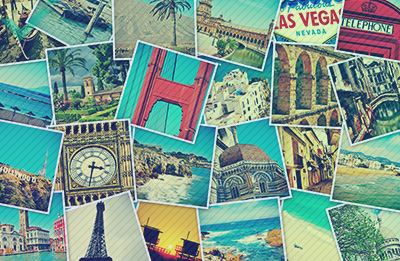Do you want to elevate your small business or startup to the global stage? Over ⅓ of internet users around the world are non-native English speakers who could spend up to twice as much time on your site, if it’s written in their native language. So, if you dream of building a loyal customer base across the world, you’ve got two options: translate or localise. But what’s the difference between these concepts and how do you choose one over the other? Read on for an in-depth look at translation and localisation with tips on selecting the right solution for your business.
TRANSLATION VS. LOCALISATION: WHAT’S THE DIFFERENCE?
Translation and localisation are intertwined, but distinct processes. Translation involves taking the original web content and changing it into another language. Concerning this practice, it is critical to preserve the original message and context of the source and convey it effectively in the target language. Doing so relies on a deep understanding of both languages and the subject at hand. Translations should always be carried out by professional translators. Localisation, on the other hand, digs a little deeper. This procedure involves taking a website and adapting it for another culture. This obviously requires translation, but also takes into consideration other factors like design and layout, culture, and colloquialisms. As the name suggests, localisation is the process of giving your website a “local” feel.

CHOOSING WHAT’S BEST FOR YOU
Now you have a basic understanding of translation/localisation and how they differ from each other. But how do you determine which is best for the unique needs and goals of your company?
TRANSLATION: A STEP TOWARD BRIDGING LANGUAGE BARRIERS
Great for: short-term solutions where you want key material accessible in multiple languages. Not so great for: long-term solutions where you plan to break into new foreign markets. Translation is an integral facet of localisation. After all, the first step to reaching new customers around the globe is communicating in their language. By translating your web content, you’re taking the first step to localise your website for consumption by audiences who don’t speak your company’s native language. Chiefly, translations provide accessibility to consumers by breaking down language barriers and stimulating communication. There are two predominant methods of translation: machine and human. The former relies on translation APIs (like Google Translate), while the latter leverages the skill and experience of human translators. Poor translations can cause significant damage to your brand’s image. That’s why we always recommend working with human translators, rather than such fickle APIs. Translation is a delicate process that involves a conscious understanding of the nuances of different languages and their respective idioms, grammar, expressions, etc.
Unfortunately, the translation technology isn’t sophisticated enough to leverage the kind of deep understanding that a native human translator can bring to the table. Instead, it relies on direct mechanical translations of words, often producing inadequate results. For instance, type the following phrase into Google Translate: “We do not take responsibility for any damages to your order during shipping.” Now, use the app to translate it into traditional Chinese and then translate the result back into English. You should get something like: “We will not cause any damage to your order during shipping.” While this is a simple example, it goes to show the problem with relying on machine translations for something as important as your website. Plus, by investing in native human translation, you’re automatically localising your content to some degree. This is because native translators sustain an intrinsic comprehension of your target language and are able to create high-quality content already optimised for consumption in other cultures. A human translator would be extremely unlikely to make the same mistake as Google Translate did in the example above. In fact, they’d be able to take your source content and perhaps improve it to maintain the original tone and message when rendered into a new language.

LOCALISATION: MEETING CULTURAL AND FUNCTIONAL EXPECTATIONS
Ideal for: maintaining brand image across multiple cultures. Not so great for short-term solutions concerned more with accessibility than success in foreign markets. Localisation is a complex, long-term solution for businesses looking to globalise. Unlike translation, this process isn’t simply concerned with the text, but the entire way by which a website and all of its content is tailored to a target audience. Think of it like this: Translation is like the résumé you hand in for a job application, while localisation is more like the way you present yourself during an interview. Localisation is an extremely powerful tool for expanding online businesses. It allows companies to open up to a vast array of markets to ensure that their brand is equally perceived around the world. How do you think Coca Cola has managed to brand itself identically in almost all countries (except North Korea and Cuba)? Here’s a hint: they certainly didn’t just translate all their marketing material.
Brands looking to achieve widespread success in multiple markets require professional localisation experts to draft up strategies on how to maintain cogent imagery, regardless of linguistic/cultural boundaries. A great example of localisation is Coca Cola’s “Share a Coke” campaign. Launching in Australia in 2011, the campaign included printing 150 popular names on products and promotional material to encourage sharing the drink with someone. In China, however, the campaign used titles like “close friend” or “classmate” instead of first names. This helped preserve Coca Cola’s friendly spirit, while carefully considering the cultural significance of first names in China. Just like translation, though, localisation can have negative effects on a company. Just imagine if the Coke campaign had used first names in China? Or what if it didn’t consider non-western names in its campaign launch in Arabic countries? The results would have been devastating for the company.
REACH YOUR GLOBAL AUDIENCE TODAY!
Reaching a global audience is a dream for many small to medium sized business and startups. In the digital age, the world of E-commerce is swelling at a faster rate than ever before. Translation and localisation are both key components of globalising, which allow brands to uphold their image regardless of cultural or linguistic boundaries. At Yuqo, we pride ourselves on providing top-shelf translation, writing and design services to help businesses like yours reach more customers worldwide. To find out more about services and competitive rates, contact us today. For more articles like this, remember to regularly check out our blog.


